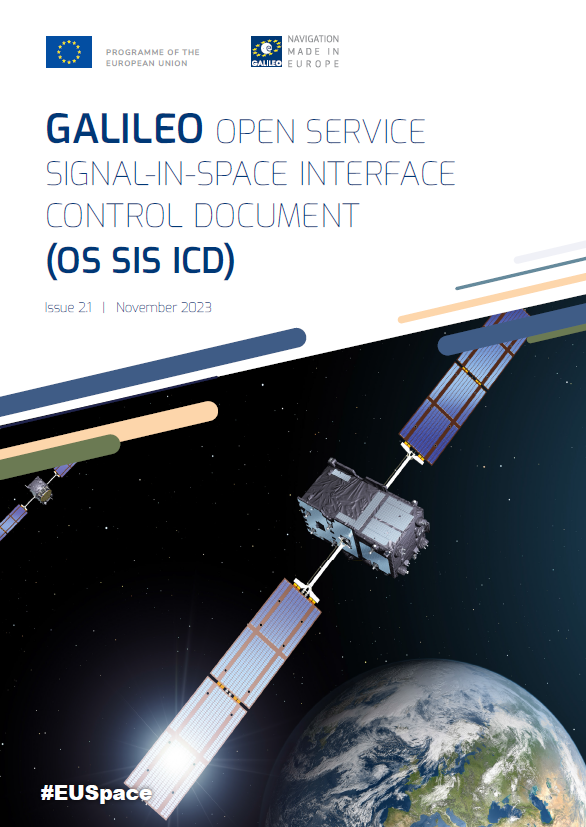A new version of the Galileo Open Service Signal In Space Interface Control Document is now available. This update includes the support to the new Extended Operations Mode (EOM). It introduces the ARAIM Integrity Support Message (ISM) within the I/NAV message transmitted in E1. It addresses links to the OSNMA ICD and NTCM documents, as well as a new Annex with the policy for the assignment of Galileo PRN codes for those GNSS planning to transmit Galileo-like signals.
This new version of the OS SIS ICD is made available together with a corresponding new version of the OS Service Definition Document (OS SDD)
The “Galileo - Open Service - Signal In Space Interface Control Document” (Galileo OS SIS ICD) provides the information needed by receiver and chipset manufacturers, application developers and service providers to process and make use of the open signals generated by the Galileo satellites.

The European Union Agency for the Space Programme (EUSPA) together with the European Commission announce the publication of the latest version of the Galileo Open Service Signal In Space Interface Control Document v2.1. The latest version introduces new elements supporting the improvement and enlargement of the Galileo service portfolio. It is made available together with a corresponding new version of the OS Service Definition Document (OS SDD).
The previous OS SIS ICD (version 2.0) was published by European Commission in January 2021. Modifications of the ICD usually introduce additional service capabilities. In this respect, the principle of backward compatibility for Galileo receivers has always been applied.
The new OS SIS ICD, in addition to a number of editorial improvements, corrections and clarifications, includes the following new elements:
- definition of OS Extended Operation Mode, and criterium for identifying when it is activated;
- description of new ARAIM Integrity Support Message (ISM), including new Annex detailing a numerical example for the computation of its 32-bits checksum;
- removal of the Annex previously dealing with authorisation of Galileo trademarks, now obsolete;
- introduction of New Annex, dealing with the Galileo PRN Codes Assignment process. In particular, codes belonging to the families E1‑B, E1‑C, E6‑B, E6‑C, E5a‑I, E5a‑Q, E5b‑I, E5b‑Q have been rendered available, subject to a policy and application form available on this web portal.
The OS SIS ICD is a key document as it provides the information required by receiver and chipset manufacturers, application developers and service providers to be able to process the Open Service signals generated by the Galileo satellites. In particular, the document specifies:
- Galileo signal characteristics
- Characteristics of Galileo spreading codes
- Galileo message structure
- Message data contents
- OS Signal in Space flags.
This document is especially relevant for the development of receiver technology, which is the key enabler for translating Galileo signals into useful services. Over the past several years, EUSPA has been engaged in open dialogue with chipset and receiver manufacturers, paving the way for Galileo to be fully integrated into a new generation of receivers and ensuring its signals will provide a wide array of new applications and services that directly benefit European citizens.
The Galileo OS SIS ICD v2.1 document can be downloaded here.
Media note: This feature can be republished without charge provided the European Union Agency for the Space Programme (EUSPA) is acknowledged as the source at the top or the bottom of the story. You must request permission before you use any of the photographs on the site. If you republish, we would be grateful if you could link back to the EUSPA website (http://www.euspa.europa.eu).